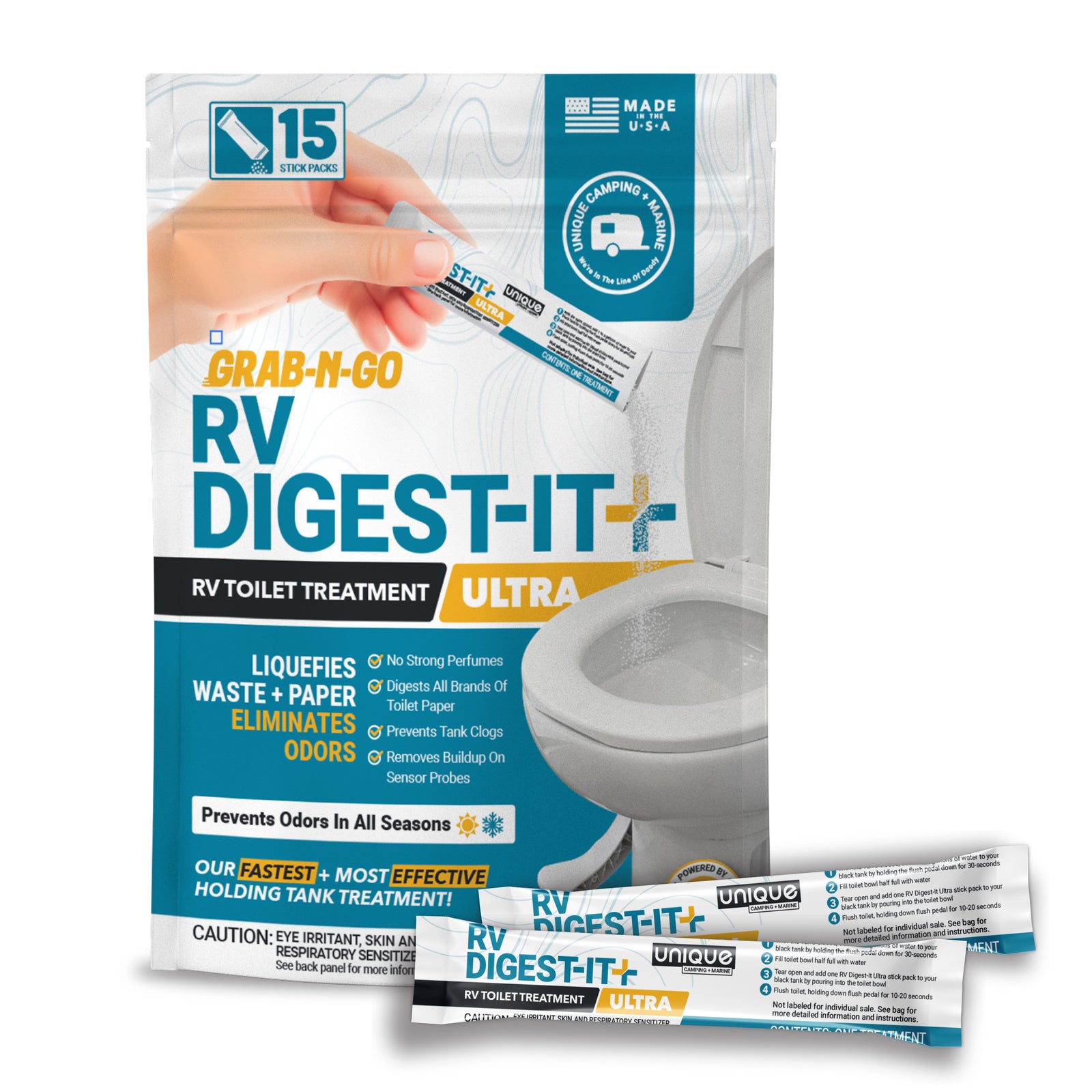
Read series from the beginning
The Unique Method is a 50/50 approach: 50 percent the right PROCESS and 50 percent the right PRODUCT. Both of these halves are key to achieving the highest possible success. There is a lot of information out there about the right tank care habits, but much of the advice you may have been given is either completely wrong or does not produce the alleged level of success. All the steps discussed in the black and gray tank guidelines boil down to four basic concepts to remember when caring for your wastewater holding tanks:
- Use your valves properly
- Use lots of water
- Dump, rinse, and deep clean regularly
- Control what goes into your tanks
The type of care habits you employ can make or break the effectiveness of the treatments you use. Let’s first discuss how to properly use your tank valves.
There’s a myth still in the RVing community that if you’re on sewer hook-ups, you can keep your black tank valve open at all times and the waste will flow out as it’s added to the tank. Urine and water will flow out like this, but that also means no liquid is staying in the tank, and without liquid inside the holding tank, solid waste has no way to soften and break down; instead it dries out and builds up right underneath your toilet line, forming a pyramid plug. Whether you’re on hook-ups or not, it is essential that the black tank valve remain closed unless you are actively dumping a full tank.
“So do I have to keep my gray tank valve closed while on hook-ups too?” No, it’s actually better for gray and galley tank valves to remain open on hook-ups because there should never be any solid food debris flowing into your gray/galley tanks, so clogging should not be an issue. You should strive to wipe as much grease and food debris from your dishes as possible before washing whether your valve is open or closed. The gray water valve should always remain closed when dry camping (boondocking) because it is illegal on most public lands to openly dump wastewater of any kind (even gray wastewater).
Since water accumulates higher and higher on the tank walls when camping with the gray valve closed, there are a couple things that are important to add to the gray tank to avoid odors and misreading sensors. Use Dawn Ultra dish soap to wash dishes and even wash hands because it will help break down grease that makes it into the gray tank. Food debris that may enter the gray tank is unlikely to be affected by Dawn Ultra, so we also recommend adding Unique RV Digest-It Plus to the gray tank so it can start breaking down any rogue food particles. We have several supporting guides that will help you control odors and prevent tank problems when dry camping/boondocking and frequent dumping isn’t possible as well as a guide on the proper use of tank valves.
Guide: Eliminating RV Toilet Odors
Guide: Preventing Clogs in Your RV Holding Tank
Guide: The Definitive Guide to Using Your RV Waste Water Valves
Now that you have the details on properly using your dumping valves, the next article will briefly discuss why water is so important to have in both tanks.
As an Amazon Associate, Unique Camping + Marine Earns from qualifying purchases.

Prevent Common Problems In Your Tanks!
From misreading sensors, preventing clogs, or eliminating odors, we've got you covered no matter how you camp! All our best holding tank tips and trick information plus more can be found conveniently in one place when you download our FREE Unique Method Field Guide PDF. Achieve holding tank bliss today!
Get The Free Download Get The Free Download



